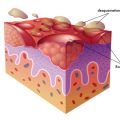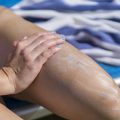Understanding Non-Surgical Skin Tightening
Non-surgical skin tightening has emerged as a sought-after solution for those aiming to achieve firmer, more youthful-looking skin without the downtime or risks associated with surgery. In recent years, the popularity of these treatments has surged across the UK, reflecting a broader shift towards minimally invasive aesthetic procedures. While many associate skin laxity with facial ageing, it is equally common for the body—particularly areas like the abdomen, thighs, arms, and neck—to lose firmness over time.
This growing interest can be attributed to several factors: advances in technology, increasing social acceptance of cosmetic treatments, and a desire for natural-looking results. Unlike traditional surgical options such as tummy tucks or lifts, non-surgical approaches typically use energy-based devices—like radiofrequency, ultrasound, or laser technologies—to stimulate collagen production and tighten existing fibres within the dermis. These methods are designed to deliver gradual improvements with minimal discomfort and little to no recovery time.
The science behind body skin laxity is rooted in our skin’s structure. Collagen and elastin are key proteins responsible for maintaining firmness and elasticity. Over time, due to ageing, sun exposure, fluctuations in weight, and lifestyle factors such as smoking or poor nutrition, these proteins break down faster than the body can replace them. This results in loose or sagging skin that many find concerning, especially after pregnancy or significant weight loss.
In summary, non-surgical skin tightening offers a promising avenue for individuals across the UK looking to address mild to moderate skin laxity on the body. With a foundation in scientific understanding and technological innovation, these procedures continue to gain traction as safe and effective alternatives to more invasive surgical interventions.
2. Leading Techniques and Technologies
In the UK, non-surgical skin tightening for the body has seen significant advancements in recent years, with a range of technologies now available to suit different needs and preferences. Understanding these leading techniques can help you make an informed decision about the best approach for your goals. Below is a detailed exploration of the most widely-used methods: radiofrequency (RF), ultrasound, and laser-based treatments.
Radiofrequency (RF) Treatments
Radiofrequency devices are among the most popular options for non-surgical skin tightening in British clinics. They work by delivering controlled heat deep into the dermis, stimulating collagen and elastin production. This process gradually firms and smooths the skin without damaging the surface layer. Notable RF systems available in the UK include Thermage, Exilis, and Forma.
Key Advantages
- Minimal discomfort during treatment
- No downtime required
- Suitable for various body areas (abdomen, arms, thighs)
Considerations
- Multiple sessions may be necessary for optimal results
- Mild redness or swelling can occur post-treatment
Ultrasound-Based Treatments
Ultrasound technology, such as Ultherapy and HIFU (High-Intensity Focused Ultrasound), is increasingly popular across the UK for lifting and tightening lax skin. These devices use focused ultrasound energy to target deeper layers of tissue, triggering a regenerative response without surgery or needles.
Main Benefits
- Non-invasive with no incisions or injections
- Results develop naturally over two to three months
- Effective on larger body areas as well as smaller regions like underarms or knees
Points to Note
- Sensation of heat or tingling during treatment is common
- Temporary tenderness may follow the procedure
Laser-Based Skin Tightening
Laser treatments such as Nd:YAG or fractional lasers use targeted light energy to heat underlying tissues, encouraging collagen remodelling and tightening loose skin. Clinics in London, Manchester, and other major UK cities often offer options like Laser Genesis or Fraxel for body contouring purposes.
Advantages
- Treatment can be tailored to specific skin types and concerns
- Often combined with other procedures for enhanced results
- Visible improvement in skin texture and tone
Caveats
- Possible temporary redness or mild peeling post-treatment
- Sun protection is essential following laser sessions
Comparison of Leading Technologies in the UK
| Treatment Type | Main Mechanism | Typical Downtime | Best For |
|---|---|---|---|
| Radiofrequency (RF) | Deep tissue heating via electrical currents | None to minimal | Laxity on abdomen, arms, thighs; general firming |
| Ultrasound (HIFU/Ultherapy) | Focused ultrasound energy stimulates collagen at depth | None to mild tenderness/swelling possible | Lifting & tightening on arms, stomach, knees; subtle contouring |
| Laser-Based Treatments | Pulsed light heats dermal layers, remodels collagen fibres | Mild redness/peeling for 1-2 days possible | Smoothing texture; treating mild to moderate laxity; combination therapies |
The availability of these technologies ensures that individuals across the UK have access to scientifically-backed solutions for non-surgical body skin tightening. It is always advisable to consult with a reputable practitioner who can tailor recommendations based on your unique skin type and desired outcome.
![]()
3. Effectiveness: What to Realistically Expect
Non-surgical skin tightening treatments are increasingly popular across the UK, particularly for those seeking subtle improvements without the risks and downtime of surgery. However, it’s important to set realistic expectations about their effectiveness. Results can be highly variable and depend on several factors, including the treatment technology used, the area of the body being treated, individual skin quality, and lifestyle habits.
Results Across Different Body Areas
The most commonly treated areas include the abdomen, thighs, arms (often referred to as “bingo wings” in the UK), buttocks, and sometimes smaller zones like knees or décolletage. Generally, patients report mild to moderate skin tightening and a firmer appearance. On the abdomen and thighs, results tend to be more noticeable in individuals with mild to moderate skin laxity rather than significant sagging. Arms can respond well, but outcomes are often less dramatic compared to surgical lifts.
Duration of Results
The longevity of results from non-surgical skin tightening is another crucial consideration. Typically, improvements last between 6 months to 2 years. Maintenance sessions are usually recommended every 6–12 months to preserve results. The gradual nature of collagen remodelling means optimal effects may only become apparent after several weeks or even months post-treatment.
Factors Impacting Outcomes
A range of factors influences the success of these treatments. Age plays a significant role; younger skin with better elasticity tends to respond more favourably. The type of technology—radiofrequency, ultrasound, or laser—also affects efficacy, with some devices demonstrating better clinical outcomes for specific body regions. Additionally, healthy lifestyle choices such as not smoking, maintaining a stable weight, and regular use of sun protection will help maximise and prolong the benefits. It’s also worth noting that while these procedures offer convenience and minimal recovery time, they are not substitutes for surgical intervention in cases of severe skin laxity.
4. Safety and Regulations in the UK
When considering non-surgical skin tightening treatments for the body, safety is a top priority. Understanding the risks, side effects, and the regulatory framework in the UK can help you make informed decisions and select reputable providers.
Safety Profiles of Non-Surgical Skin Tightening Treatments
Most non-surgical body skin tightening procedures are considered low-risk when performed by qualified professionals. Common technologies used include radiofrequency, ultrasound, and laser-based devices. These treatments typically involve minimal downtime, but there are still potential side effects to be aware of:
| Treatment Type | Common Side Effects | Serious Risks (Rare) |
|---|---|---|
| Radiofrequency (RF) | Mild redness, swelling, temporary tingling | Burns, blistering if misused |
| Ultrasound (e.g., HIFU) | Sensitivity, minor bruising | Nerve damage (very rare), burns |
| Laser-Based Devices | Redness, slight swelling, pigmentation changes | Scarring, infection (extremely rare) |
While adverse effects are uncommon when treatments are administered by trained practitioners, it’s essential to discuss your medical history and expectations during the consultation phase.
The Regulatory Environment for Non-Surgical Aesthetics in the UK
The UK has established robust guidelines to protect patients seeking non-surgical cosmetic treatments. Oversight falls under several bodies:
- Care Quality Commission (CQC): Clinics offering certain aesthetic treatments must be registered with the CQC if they provide regulated activities. The CQC inspects clinics to ensure standards around hygiene, staffing, and patient safety.
- General Medical Council (GMC) & Nursing and Midwifery Council (NMC): Medical professionals performing these procedures should be registered with their respective councils.
- Advertising Standards Authority (ASA): Ensures that all marketing related to non-surgical treatments is honest and not misleading.
- Joint Council for Cosmetic Practitioners (JCCP): Offers a voluntary register of practitioners who meet high standards of training and ethical practice.
Your Rights as a Patient in the UK
- You have the right to ask about your practitioner’s qualifications and registration status.
- Treatments should only be performed after a full consultation and consent process.
- You should receive clear aftercare instructions and information on who to contact in case of complications.
Avoiding Unregulated Providers
The growth of non-surgical aesthetics has led to an increase in unregulated providers. Always verify that your practitioner operates from a reputable clinic, is appropriately insured, and follows UK-specific protocols for safety and hygiene. This approach minimises risk and ensures you receive care that meets national standards.
5. Choosing a Qualified Practitioner
Selecting the right practitioner is crucial for ensuring both the safety and effectiveness of non-surgical skin tightening treatments in the UK. With the growing popularity of these procedures, it’s essential to be discerning about where and with whom you book your treatment.
Accreditation and Professional Standards
In the UK, reputable practitioners should be registered with relevant professional bodies such as the General Medical Council (GMC) for doctors or the Nursing and Midwifery Council (NMC) for nurses. Additionally, clinics may be regulated by the Care Quality Commission (CQC) in England, Healthcare Improvement Scotland, or other regional regulatory authorities. Look for visible certification and check that practitioners have up-to-date training in the specific skin tightening technology being used.
Clinic Environment and Equipment
A trustworthy clinic will maintain high standards of cleanliness and utilise equipment that is CE-marked for safety compliance. It’s wise to enquire about how often devices are serviced and whether staff regularly update their skills to keep pace with new advancements.
Key Questions to Ask
For peace of mind, consider asking: What qualifications and experience does the practitioner have with this particular procedure? Is there clear information about potential risks, side effects, and aftercare? What results can realistically be expected based on your individual needs? Are there testimonials or before-and-after images from previous clients? Ensuring open communication and transparency will help you feel confident in your choice.
Ultimately, investing time in choosing a qualified practitioner not only safeguards your well-being but also increases the likelihood of achieving satisfying results from your non-surgical skin tightening treatment in the UK.
6. Aftercare and Long-Term Maintenance
Proper aftercare is crucial to maximising the benefits and safety of non-surgical skin tightening treatments for the body. Following your practitioner’s guidance can help minimise discomfort, reduce the risk of complications, and support optimal results.
Immediate Aftercare Advice
Post-procedure, it’s common to experience mild redness, swelling, or tenderness in the treated areas. These effects are usually short-lived. To aid recovery:
- Avoid excessive heat: Refrain from hot baths, saunas, or intense exercise for at least 24–48 hours after treatment.
- Protect your skin: Use a high-factor sunscreen and avoid direct sun exposure to prevent pigmentation changes.
- Gentle skincare: Apply soothing moisturisers as recommended by your clinician and avoid harsh exfoliants or active ingredients for several days.
- Stay hydrated: Drinking plenty of water supports skin health and healing.
Maintaining Your Results
The longevity of results from non-surgical skin tightening varies based on the chosen technology, your age, lifestyle, and natural ageing processes. To prolong the effects:
- Follow a balanced lifestyle: Maintain a healthy diet, regular exercise routine, and avoid smoking or excessive alcohol consumption.
- Adopt a consistent skincare regime: Use products rich in antioxidants and peptides to support collagen production.
- Monitor weight fluctuations: Rapid weight gain or loss can compromise the treatment outcome.
- Schedule regular consultations: Periodic check-ins with your practitioner help monitor progress and adapt your maintenance plan if needed.
When to Consider Top-Up Procedures
Results are not permanent; most individuals benefit from annual or biannual maintenance sessions, depending on the device used and individual response. Top-up procedures may be recommended when you notice a gradual return of laxity or if you wish to enhance previous outcomes. It’s best to discuss an appropriate schedule with a qualified UK-based practitioner familiar with your treatment history and expectations.
Final Thoughts on Safe Practice in the UK Context
The landscape of non-surgical body skin tightening continues to evolve across Britain. By adhering to aftercare guidelines, maintaining realistic expectations, and choosing reputable clinics regulated by bodies such as the Care Quality Commission (CQC), you can enjoy firmer, more youthful-looking skin safely and confidently over the long term.


